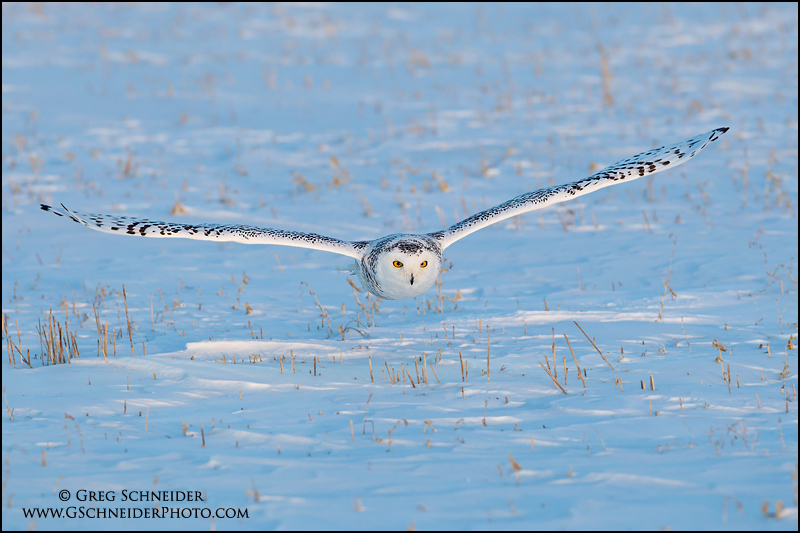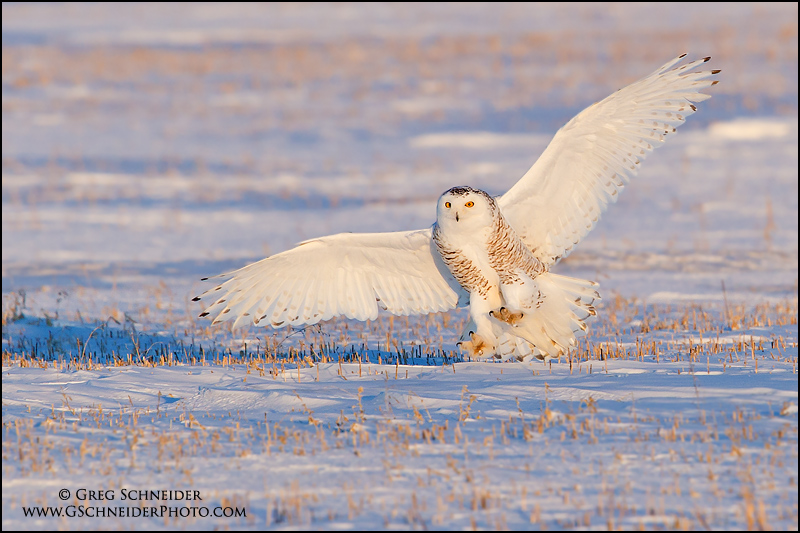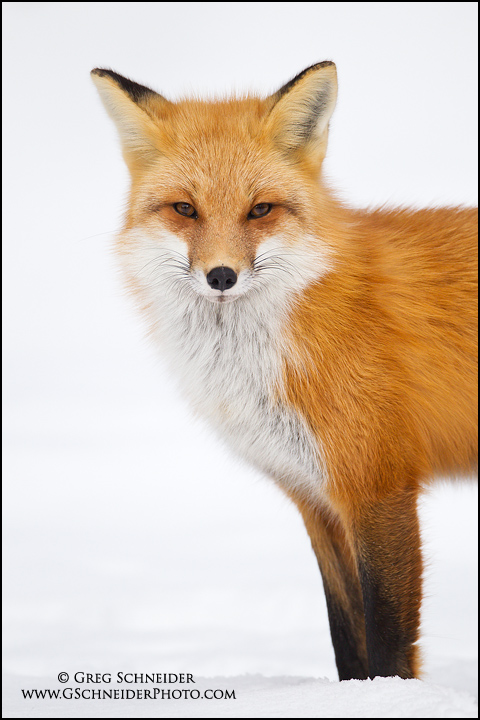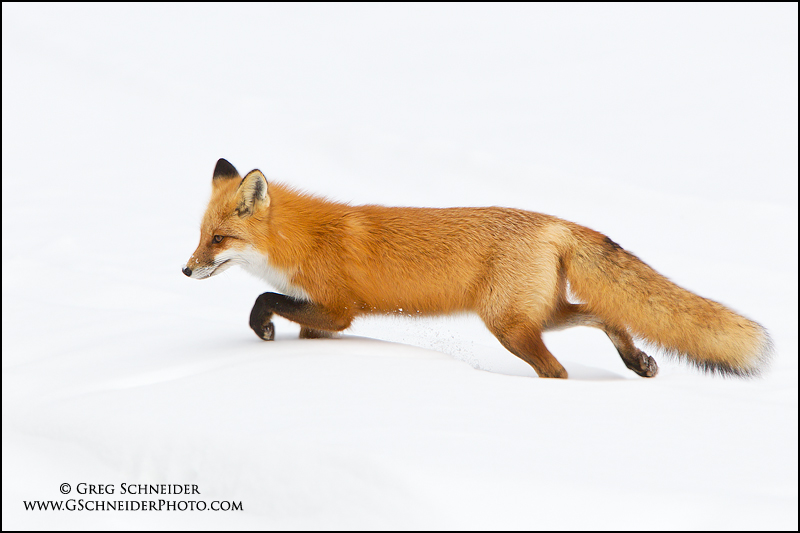Tagged: winter
Snowy Owls in sweet light
I’ve added two more images of snowy owls from last winter, photographed here in Ontario, Canada. I have many more photos to go through. I really liked the light on both of these, and it was great to have this co-operative female snowy to photograph as she hunted.
More Red Foxes
As promised, here are some more photos of red foxes to continue my earlier post.
Red Foxes
This past winter I had some incredible opportunities with red fox. Surprisingly, this pair hunted right near the road and were accommodating enough to allow for some really close photos. How close is close? I was able to capture many images using just a 70-200mm lens with 1.4x teleconverter, which is not only a very short focal length for a wild animal, but also gave great flexibility in framing.
Here are two photos of the female (vixen) that I particularly liked. I believe there are several more worthy of posting.
Northern Hawk Owls Part 2
Ottawa was host to at least one hawk owl last winter. They are more common at those latitudes, but still don’t occur that often; in fact I haven’t seen one this year, although there have been a few scattered reports. The light was better than on my previous trips to the local hawk owl the previous year.
Strix nebulosa
In my opinion, one of the most appropriate Latin names for any bird is that of the Great Gray Owl: Strix nebulosa. The species certainly has a nebulous character, roosting deep in dense woods, and only appearing at the edges of open areas near dawn and dusk to hunt, which makes it rather hard to find with the limited hours of daylight in the winter. Once one actually locates this owl, it is immediately evident that though it seems very lethargic, it is extremely aware of all that is happening in its surroundings. For instance, it is very possible to have them suddenly launch off their perch only to catch a vole under a few feet of snow. They show very little fear of humans; there have been many photos posted showing people standing right next to a Great Gray Owl. When in flight, their wingspan is truly impressive.
They tend to come south in any good numbers only once every few years, when the vole population crashes further north. The large invasion in the winter of 2004-2005 was well documented, but in the years since then there haven’t been too many that came south.
This past winter I was able to get numerous photos of a pair of them that wintered near Ottawa; most photos are from a trip in February with Alex Mody.
Northern Hawk Owls
Raptors are always one of my favourite subjects to photograph. Their size makes them easy to spot and they are generally more approachable in the winter, and the absence of leaves on trees makes them even easier to spot as they often hunt on roadsides.
One of the more unusual owls for a southern area Northern Hawk Owl. We had one over-winter near Hamilton in 2008 and it stayed for about two months. It was an unprecedented bird for the area, and many people saw it during its stay. A small, falcon-like owl, it lives up to its name – hunting by day and mostly by sight. They can be quite aggressive, and show little fear of people.

This Hawk Owl posed for a few minutes on this pole, seemingly showing off his catch. (click to enlarge)

















